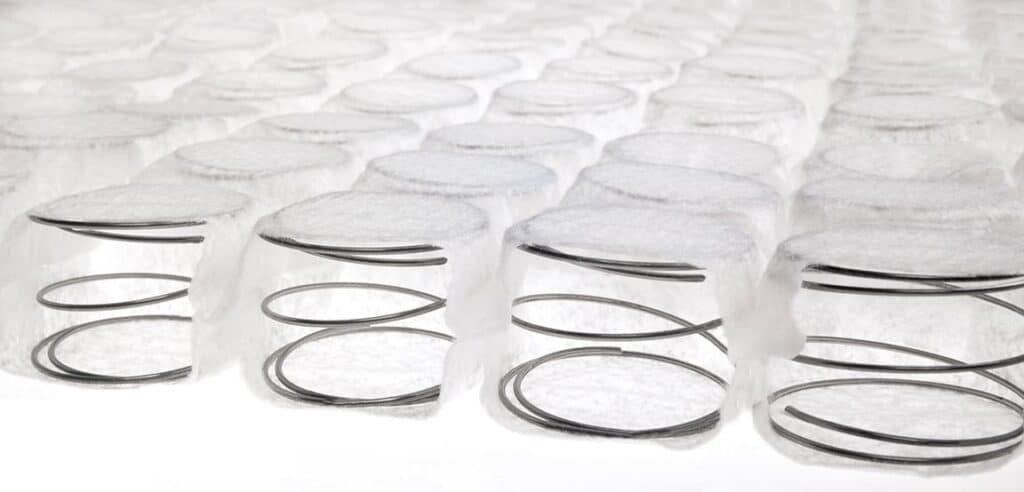The Science of Sleep: Mattresses’ Impact on Restful Nights
Sleep is a vital part of our lives, impacting our physical and mental well-being. Despite decades of research, the science behind sleep still holds many intriguing mysteries. One key aspect of achieving restful sleep is the connection between the quality of our mattress and our overall sleep experience. A suitable mattress can improve the quality of our sleep and contribute to better health and well-being.
Understanding the science of sleep involves exploring the various stages of sleep and how they benefit our bodies differently. Researchers have identified a strong correlation between a good night’s rest and proper mattress selection, highlighting the importance of investing in a comfortable, supportive mattress designed to suit our needs. Choosing the best mattress can be complex, considering the numerous factors influencing mattress selection. It’s essential to consider the type of materials used, firmness levels, and the lifespan of a mattress to ensure we make a well-informed decision.
Key Takeaways
- The quality of our mattress plays a crucial role in achieving restful sleep.
- Understanding the science of sleep helps inform better mattress selection and sleep habits.
- Investing in a suitable mattress contributes to improved overall health and well-being.
Understanding the Science of Sleep
The science of sleep is a complex and fascinating topic. One essential aspect of sleep is its connection to our physical environment, such as the mattress we sleep on each night. We must first examine how sleep works physiologically to delve into the link between mattresses and restful sleep.
Our body goes through various sleep stages, including quiet sleep (non-REM sleep) and REM sleep (dreaming sleep) (1). Our internal clock regulates these stages, known as circadian rhythms (2). This internal clock is influenced by external factors, such as light exposure and daily activities, as well as genetic factors that affect our sleep patterns (3).
Aside from the sleep stages and circadian rhythms, other factors contribute to the quality of our sleep. One hypothesis is that sleep helps conserve energy and allows our body to heal (4). With this in mind, it’s crucial to consider how our sleeping environment, particularly the mattress, can impact our sleep.
The key to understanding the connection between a mattress and sleep lies in three main components: support, comfort, and durability (5). Support refers to how well a mattress holds your body in alignment, especially around the spine, whereas comfort is a sense of relaxation and subjective pressure relief. Durability determines how long a mattress can maintain its original shape and support.
A high-quality mattress should provide optimal support, evenly distributing body weight and maintaining proper spinal alignment. At the same time, it should offer sufficient comfort, allowing the body to relax and sink into the mattress without causing discomfort, and boast a relatively long lifespan.
Footnotes
- The Science of Sleep: REM Sleep, Sleep Stages, and More ↩
- How Sleep Works: Understanding the Science of Sleep ↩
- The Science of Sleep: Understanding Whsleepppens When You Sleep ↩
- Understanding the Science of Sleep – Sleep and Cognition ↩
- The Science of Sleep: Understanding the Connection Between Mattresses ↩
The Essential Role of Mattresses in Sleep Quality
The Mechanism of Mattresses
Mattresses play a crucial role in ensuring a good night’s sleep by providing support, comfort, and proper alignment to the spine. They help distribute body weight, reduce pressure points, and conform to the body’s shape. This is essential for maintaining a comfortable sleeping position and preventing sleep disruptions.
Research suggests that a medium-firm mattress promotes comfort, proper spinal alignment, and quality sleep. An adjustable mattress allows a person to tailor the firmness to their needs and preferences, further enhancing the sleep experience. A well-designed mattress also regulates temperature, which is vital for sleep quality. As the body goes through various sleep stages, its temperature fluctuates. A mattress that facilitates temperature regulation helps maintain an optimal environment for uninterrupted sleep.
Impact on Deep Sleep
Sleep comprises several stages, including deep sleep, essential for the body’s physical and mental restoration. A mattress significantly influences the quality of deep sleep by either promoting or impeding sleep continuity. Proper support and comfort are necessary to reduce the risk of sleep disturbances and ensure sufficient time spent in the deep sleep stage.
A study on smart mattresses highlights the potential of mattress technology to improve sleep quality. Features such as force sensors can monitor sleep patterns and provide valuable data for sleep enhancement. Apart from the functionality, the choice of materials, such as memory foam or innerspring, directly affects a person’s deep sleep experience. For example, certain materials may lead to better motion isolation, preventing disturbances caused by a partner’s movements during sleep.
Factors Influencing Mattress Selection
Mattress selection plays a critical role in ensuring a restful night’s sleep. When choosing the ideal mattress to improve sleep quality, one should consider several factors. This section will explore some of these factors, focusing on material considerations and firmness customisation.
Material Considerations
The materials used in a mattress can significantly impact comfort, durability, and overall sleep quality. Some popular mattress materials include:
- Memory foam: This mattress conforms to the body’s shape, providing personalised support and pressure relief. Memory foam mattresses can also help with temperature regulation, ensuring a comfortable sleep environment.
- Latex: Latex mattresses offer excellent support and natural responsiveness, with benefits such as resistance to dust mites and mould. They can be a good option for those with allergies or sensitive skin.
- Innerspring: Innerspring mattresses contain a network of steel coils that provide support and bounce. This traditional type of mattress is often less expensive but may lack the same support and durability as other materials.
- Hybrid: Combining elements of innerspring and foam or latex mattresses, hybrid mattresses aim to offer the best features of each material, creating a balanced level of support and comfort.
Customisation of Firmness
Determining the correct level of firmness for a mattress is essential in achieving restful sleep. The appropriate firmness may vary depending on an individual’s sleep position, weight, and preference. Here are some general guidelines for choosing the right firmness:
- Soft mattresses may be suitable for lighter individuals or side sleepers, as they allow for proper spinal alignment and pressure relief.
- Medium: This level of firmness can be ideal for those who sleep in multiple positions, offering a balance between support and comfort.
- Firm mattresses are often recommended for back or stomach sleepers, as they provide substantial support and help maintain a neutral spine position.
Health Implications of Using the Right Mattress
Prevention of Sleep Disorders
A good mattress can prevent sleep disorders by ensuring an individual can achieve restful sleep. Sleeping on a comfortable surface can help individuals fall asleep faster, as a small 2015 study on memory foam mattresses of medium firmness suggested. The right mattress can also help maintain a proper sleep routine, reducing the risk of developing sleep disorders such as insomnia. Moreover, a good mattress can regulate temperature and provide adequate air circulation, which is essential for those suffering from sleep apnea or night sweats. By selecting a mattress with temperature-regulating properties, sleep quality can significantly improve, reducing sleep disruptions and healthier sleep patterns.
Promotion of Spinal Health
Optimal spinal health is essential for overall well-being; the right mattress can significantly contribute to this. According to a biomechanical review, sleeping mattress parameters can dramatically influence sleeping comfort and prevent sleep-related musculoskeletal problems.
An ideal mattress provides adequate support to maintain the spine’s natural curvature, alleviating pressure points and reducing the risk of developing chronic back pain. A recent study found that decreasing spinal curvature when sleeping laterally can help reduce low-back pain and improve sleep quality for those with chronic low-back pain.
Determining the Lifespan of a Mattress
The lifespan of a mattress depends on various factors such as its build quality, materials used, and the weight and sleeping styles of the sleepers. This section will discuss the signs of mattress deterioration and the ideal replacement time for different mattress types.
Signs of Mattress Deterioration
Mattress deterioration can be identified through various indicators, which include:
- Sagging or indentations: The presence of visible sagging or deep indentations in the mattress surface is a critical sign that the support provided by the mattress has diminished.
- Discomfort or pain: If sleepers consistently experience discomfort, pain, or stiffness upon waking up, it might indicate that the mattress is no longer providing adequate support.
- Allergy symptoms: An older mattress can accumulate allergens like dust mites and mould over time. If sleepers experience worsened allergy symptoms, it might be time to replace the mattress.
Ideal Replacement Time
Different types of mattresses have varying lifespans. The average lifespan of each mattress type is as follows:
- Latex: These mattresses can last between 15 to 25 years due to the durable nature of the latex material. 1
- Memory foam: Memory foam mattresses have a lifespan of 8 to 10 years, given their susceptibility to body impressions and general wear. 2
- Hybrid: Combining the features of innerspring and foam mattresses, hybrid mattresses generally last 7 to 10 years. 3
Footnotes
In this article, we have explored the connection between mattresses and restful nights. The primary components responsible for this relationship are support, comfort, and durability. A mattress that offers adequate support helps maintain proper spinal alignment, thus preventing discomfort and potential sleep-related musculoskeletal problems. Sleeping mattress parameters greatly influence an individual’s perception of comfort and relaxation. This subjectivity makes it crucial to consider personal preferences when selecting a mattress. Interestingly, the subjective feeling of sleep quality may vary depending on the individual and doesn’t always align with recorded sleep data.
Sleep is vital in maintaining overall health and well-being, so investing in a mattress that meets specific needs is essential. A well-chosen mattress can contribute to improved sleep quality, resulting in enhanced physical and mental health. With the advancements in sleep science and technology, individuals can now make informed decisions while selecting a mattress that ensures restful nights.
Frequently Asked Questions
How do mattresses affect sleep quality?
Mattresses play a crucial role in the overall sleep quality, providing support, comfort, and durability. Support refers to a mattress’s ability to align the body, particularly around the spine. Comfort is a sense of relaxation and relief from pressure points, whereas durability refers to the mattress’s lifespan and ability to maintain its structure over time (source).
What role do materials play in mattress selection?
Different materials can affect a mattress’s temperature control, support, and comfort level. Some materials, like memory foam and latex, are better at conforming to the body shape and providing pressure relief, while others, like innerspring and hybrid mattresses, offer more bounce and support (source). Choosing the suitable material depends on individual preferences and specific sleep needs.
How does mattress firmness impact sleep?
Mattress firmness is critical for providing adequate support and maintaining proper spinal alignment during sleep. The appropriate level of firmness varies depending on individual needs, sleep position, and body weight. Generally, side sleepers may prefer a softer surface to contour the body, while back and stomach sleepers might find a firmer surface more suitable for spinal alignment source.
Can a tailored mattress enhance restfulness?
A tailored mattress designed to cater to unique sleep needs can improve restfulness and overall sleep quality. Customisable mattresses often offer options for adjusting firmness, support, and comfort layers to suit an individual’s preferences and body type, resulting in a more personalised sleep experience source.
What are the long-term effects of an unsuitable mattress?
The long-term consequences of sleeping on an unsuitable mattress include an increased risk of developing sleep disorders, pain and discomfort, poor sleep quality, and potential impacts on overall health and well-being.
How can one choose the best mattress for their sleep needs?
Selecting the best mattress for individual sleep needs involves considering factors like body weight, preferred sleep position, specific support requirements, and personal comfort preferences. Researching different materials and discussing any sleep issues or health concerns with a healthcare professional before making a final decision source is essential.



